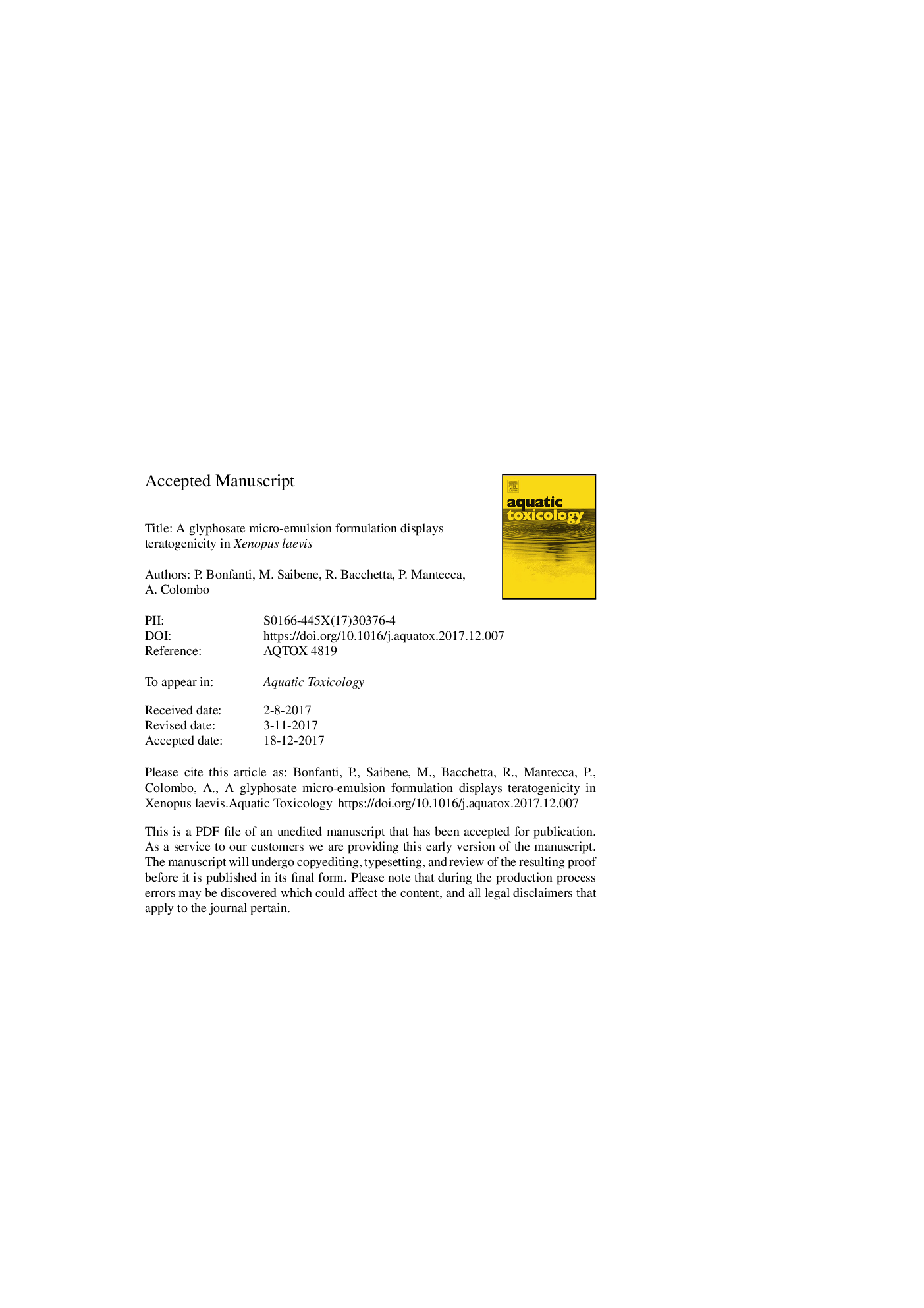| Article ID | Journal | Published Year | Pages | File Type |
|---|---|---|---|---|
| 8883868 | Aquatic Toxicology | 2018 | 29 Pages |
Abstract
Specific concentration-dependent abnormal phenotypes, such as craniofacial alterations, microphthalmia, narrow eyes and forebrain regionalization defects were evidenced by gross malformation screening and histopathological analysis. These phenotypes are coherent with those evidenced in Xenopus laevis embryos injected with glyphosate, allowing us to hypothesize that the teratogenicity observed for Roundup® Power 2.0 may be related to the improved efficacy in delivering glyphosate to cells, guaranteed by the specific surfactant formulation. In conclusion, the differences in GBH formulations should be carefully considered by the authorities, since sub-lethal and/or long-term effects (e.g. teratogenicity) can be significantly modulated by the active ingredient salt type and concentration of the adjuvants. Finally, the mechanistic toxicity of glyphosate and GBHs are worthy of further research.
Related Topics
Life Sciences
Agricultural and Biological Sciences
Aquatic Science
Authors
Patrizia Bonfanti, M. Saibene, R. Bacchetta, P. Mantecca, A. Colombo,
